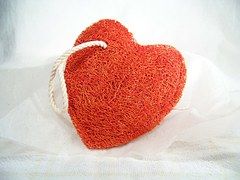Forgiveness
Ho'oponopono: Ancient Concept for a Modern World
The secret ingredients to forgiveness explained.
Posted January 20, 2016

“In everything, truth surpasses the imitation and copy.”
- Marcus Tullius Cicero
Do you remember that old game of rumor transmission as a kid, it was called "telephone" I believe.
We’d all sit in a circle and someone would whisper in their neighbor’s ear. That person would listen, then whisper what they heard to the next person. This continued until the final kid in the circle said what she heard out loud.
Was it ever even close to what was originally said? Nope!
Unfortunately, that’s what often happens with the transmission of ancient wisdom. By the time it gets translated linguistically, interpreted culturally and absorbed personally, the ancients who lived by that wisdom would have a heck of a time even recognizing it!
And unfortunately, the power of that wisdom often gets lost as well.
That’s why things like the Law of Attraction get a bad rap. Is there a Law of Attraction? You betcha. Is it a powerful tool? Absolutely. But in the past few years, personal growth teachers have promoted the idea that all you need to do is slap together a fancy vision board and think happy thoughts and voila! Your heart’s desire will magically appear!
The ancients would have laughed their heads off.
The Law of Attraction, like all of the basic Universal laws, is a bit more technical than it’s being taught and requires more participation to be effective. Which brings me to the ancient practice of ho’oponopono, known as the Hawaiian forgiveness process.
Ho’oponopono was an integral part of Hawaiian culture centuries ago. It was taught in slightly different forms on different islands, but the intention was the same: to cleanse the energy between you and others, to release the hurt and emotional baggage of a transgression or misunderstanding so you could remain pono with the world. (English doesn’t have a word that truly captures the meaning of pono. When you’re pono, you feel right with the world, aligned with yourself, comfortable in your own skin.)
In the last several decades, ho’oponopono was introduced to the world in various forms with a variety of modifications. For example, Morrnah Simeona (who, along with Papa Bray, taught ho’oponopono to my father) was influenced by Christianity as well as Eastern spiritual paths in the way she approached ho’oponopono. Her student, Dr. Ihaleakala Hew Len, simplified the process into four steps: 1) “Please forgive me.” 2) “I’m sorry.” 3) “I love you.” 4) “Thank you.” Other teachers after Dr. Len have simplified the process even further to: “I’m sorry. I love you.”
Lately, researchers have revealed that forgiveness has not only emotional benefits but physical benefits as well. So the idea of ho’oponopono has surfaced in the mainstream. That’s great! Except, just like the Law of Attraction, if ho’oponopono is taught in a shallow, microwave-ready form, people will be disappointed in the results.
Don’t get me wrong, I’m all for simplification. But just mouthing a few words won’t bring you clarity or help you become truly pono. If you leave out critical aspects of the process and don’t immerse yourself in the practice, the incredible power of ho’oponopono is lost.
I’ve taught ho’oponopono for many years to thousands of students and it was even the subject of my PhD dissertation. As importantly, I’ve used it daily in my own life since my teenage years. That said, effective ho’oponopono should include specific aspects:
Flowing loving healing energy: In the ho’oponopono process I was taught and teach, a key ingredient was to allow Universal loving healing energy to enter through the top of your head and fill your body. Next, allow this loving healing energy to flow out of your heart chakra into the other person. This energy may seem like a white light or a warm pleasant sensation. Though it’s nice to say “I love you,” it’s more important to experience that love flowing through you to the other.
Mutual forgiveness: In Western culture, we tend to say, “I’m sorry” and think we’re done. But to complete the cycle and be pono, we must both ask for and offer forgiveness. “I forgive you. Please forgive me.” If you think about it, asking for forgiveness is much more vulnerable and open than merely apologizing.
Cutting the aka connection: Hawaiians believed that we are connected to everyone we’ve ever come in contact with through “aka” which literally means “sticky stuff.” Aka is the etheric conduit through which life energy flows. To complete ho’oponopono, the aka connection is cut between you and the other person. Why? It allows you to choose to be in relationship with the other person and start fresh without the baggage of the past. (It also allows you to choose to end that relationship if appropriate.)
The point isn’t to try to replicate the exact form of ho’oponopono that the ancients practiced. For example, I was taught to do a specific Hawaiian chant before ho’oponopono. Do all my students learn and do this chant? No. But we make sure that the depth and essence of ho’oponopono is not lost as we modify the process.
I like how Desmond Tutu described the power of true forgiveness:
“Because forgiveness is like this: a room can be dank because you have closed the windows, you've closed the curtains. But the sun is shining outside, and the air is fresh outside. In order to get that fresh air, you have to get up and open the window and draw the curtains apart.”
To your TOTAL empowerment!
Mahalo—
Dr. Matt.
—
Byline: Matthew B. James, MA, Ph.D., is President of The Empowerment Partnership. Author of several books, Dr. Matt has trained thousands of students to be totally empowered using Neuro Linguistic Programming (NLP), Huna, Mental Emotional Release® (MER®) therapy. Learn more about Huna and Ho'oponopono at www.huna.com or visit his blog at www.DrMatt.com.




